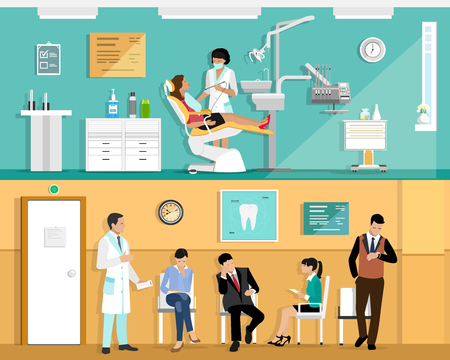Understanding Individual Needs in Depression Recovery
When it comes to helping people recover from depression, U.S. clinics know that there is no one-size-fits-all solution. Every person’s experience with depression is unique, which means their recovery plan should be, too. That’s why American clinics take time to learn about each patient before they start treatment. This process involves looking closely at the patient’s emotional, medical, and social background.
Why Personal Background Matters
Depression can be influenced by many factors, including past experiences, current stress levels, family history, and even work or school life. By understanding these factors, healthcare providers can create a plan that fits the patient’s real-life situation—not just the symptoms they show.
Key Areas Evaluated by U.S. Clinics
| Category | Examples | Why It Matters |
|---|---|---|
| Emotional History | Previous trauma, anxiety levels, coping skills | Helps identify triggers and strengths |
| Medical Background | Other health issues, medication use, physical health | Ensures safe and effective treatment choices |
| Social Environment | Family support, work situation, community involvement | Affects motivation and access to resources |
The First Step: A Comprehensive Assessment
Most U.S. clinics begin with a thorough assessment. This might include talking with the patient about their feelings, reviewing their medical records, and asking questions about daily life. Sometimes family members are invited to share their perspective if the patient agrees. This helps the care team get a full picture of what the person needs.
How Assessments Lead to Personalized Care
- Setting Realistic Goals: Patients work with clinicians to set goals that feel possible for them.
- Selecting the Right Therapies: Some people benefit more from talk therapy; others may need medication or group support.
- Building Support Networks: Knowing who can help outside of the clinic makes recovery more successful.
The Bottom Line: Everyone’s Journey Is Different
This personalized approach is at the heart of American rehabilitation clinics. By taking time to understand each individual’s needs, clinics can offer care that truly supports long-term recovery from depression.
2. Assessment Tools and Initial Evaluation
When it comes to personalizing rehabilitation plans for depression in the United States, clinics start with a thorough assessment process. This step is essential because it helps care teams understand each persons unique needs and challenges. U.S. clinics rely on standardized screening methods to create a clear starting point for care. Two of the most common tools are the PHQ-9 questionnaire and detailed clinical interviews.
Standardized Screening Methods
The Patient Health Questionnaire-9 (PHQ-9) is a short, easy-to-complete survey that asks about symptoms of depression over the past two weeks. It’s widely used in American clinics because it’s reliable, simple, and gives both patients and providers a quick snapshot of how serious the depression may be.
| Tool Name | What It Measures | How Its Used |
|---|---|---|
| PHQ-9 | Depression severity | Self-completed questionnaire; results help guide treatment planning |
| Clinical Interview | Mood, behavior, history, daily functioning | Face-to-face conversation with a mental health provider for deeper understanding |
In-depth Clinical Interviews
While screening forms like the PHQ-9 are helpful, they’re just one part of the puzzle. Mental health professionals in the U.S. also conduct comprehensive clinical interviews. During these conversations, therapists or doctors ask about your mood, daily routines, medical history, family background, and any stressors you might be facing. These interviews are private and judgment-free — their goal is to help you feel heard and understood.
Why These Assessments Matter
The combination of standardized questionnaires and one-on-one interviews lets clinics establish a solid baseline for care. By gathering this information up front, healthcare teams can design personalized rehab plans that fit your specific situation. This approach ensures no one gets a “one size fits all” treatment — instead, every plan starts with what matters most to you.

3. Multidisciplinary Teams: Collaboration at the Core
One of the standout features of depression recovery in U.S. clinics is the use of multidisciplinary teams. Instead of working alone, different experts join forces to help each person heal in a way that fits their unique needs. This teamwork approach ensures that care goes beyond just mental health and covers all aspects of a persons well-being.
Who Makes Up a Multidisciplinary Team?
Typically, U.S. clinics bring together several types of professionals to create a strong support system for each patient:
| Role | Main Responsibilities |
|---|---|
| Mental Health Professionals (Psychiatrists, Psychologists, Therapists) | Diagnose depression, provide therapy, manage medications, track progress |
| Physical Therapists | Develop movement and exercise plans to boost mood and energy, address physical symptoms related to depression |
| Social Workers | Help with community resources, family support, financial counseling, and daily living needs |
| Nurses & Case Managers | Coordinate appointments, monitor physical health, ensure smooth communication between team members |
How Does Collaboration Work?
The team meets regularly—sometimes weekly—to discuss each patients progress. They share insights and update recovery plans as needed. For example, if someone is struggling with motivation to attend therapy due to fatigue, the physical therapist might adjust exercises while the social worker checks for outside stressors. This ongoing conversation means every part of a person’s life gets attention, not just their mental health symptoms.
Benefits for Patients
- Personalized Attention: Plans are shaped by input from multiple perspectives.
- Smoother Care: Less chance of details slipping through the cracks because everyone communicates.
- Whole-Person Focus: Emotional, physical, and social needs are all addressed.
- Better Outcomes: Patients feel supported on all fronts, increasing chances for lasting recovery.
Real-Life Example
If a young adult with depression also struggles with chronic pain and trouble keeping a job, their team might include a therapist for talk therapy, a physical therapist for gentle exercise routines, and a social worker to connect them with job training programs—all working together toward shared goals.
4. Customization of Therapy Approaches
One of the most important aspects of depression recovery in U.S. clinics is the personalized approach to therapy. No two people experience depression in exactly the same way, so American clinics strive to blend various evidence-based treatments to match each patient’s unique needs and goals. Here’s how this customization works in practice:
Blending Evidence-Based Treatments
Clinicians start by assessing each individual—looking at their symptoms, personal history, and lifestyle. Based on this information, they create a custom plan using a mix of proven therapies:
| Treatment Type | Description | How It’s Personalized |
|---|---|---|
| Cognitive Behavioral Therapy (CBT) | A structured talk therapy that helps patients identify and change negative thinking patterns. | Sessions may focus on specific triggers or stressors relevant to the individual’s life, such as work challenges or family issues. |
| Medication Management | Use of antidepressant medications to balance brain chemistry. | The type, dosage, and combination of medications are tailored based on medical history and patient feedback. |
| Holistic Practices | Mindfulness, yoga, nutrition counseling, or exercise plans that support overall well-being. | Selected according to patient interests and what fits best with their daily routine. |
Patient-Centered Goals
American clinics put a strong emphasis on working with patients to set realistic and meaningful goals for recovery. These goals might include returning to work, improving relationships, or simply finding more joy in daily life. Therapists regularly check in to see if these goals are being met and adjust treatment plans as needed.
Collaborative Care Teams
In many U.S. clinics, care involves a team approach. Psychologists, psychiatrists, social workers, and even primary care doctors communicate closely to make sure all aspects of a person’s health are considered. This teamwork helps ensure that every part of the plan supports the individual’s recovery journey.
5. Ongoing Monitoring and Plan Adjustments
Why Continuous Monitoring Matters
In the U.S., clinics recognize that recovering from depression is not a one-size-fits-all journey. Everyone’s experience is unique, and what works for one person might not work for another. That’s why ongoing monitoring is a key part of personalized rehabilitation plans. By keeping a close eye on each patient’s progress, care teams can spot what’s working and what needs to change.
How Progress Is Tracked
Clinics use different tools and methods to check in with patients regularly. This can include:
- Weekly or bi-weekly therapy sessions: Regular check-ins help therapists understand how a patient is feeling week by week.
- Self-assessment questionnaires: Patients often fill out forms about their mood, sleep, energy levels, and other symptoms.
- Digital health apps: Some clinics use secure apps that allow patients to track their mood and activities daily.
- Family or caregiver feedback: Input from loved ones can provide extra insight into a patient’s daily life and progress.
Common Tools Used in U.S. Clinics
| Tool/Method | Purpose |
|---|---|
| PHQ-9 Questionnaire | Measures depression severity |
| Cognitive Behavioral Therapy (CBT) Checklists | Tracks therapy goals and progress |
| Mood Tracking Apps (e.g., Moodfit) | Records daily emotions and triggers |
| Telehealth Video Calls | Enables virtual check-ins for remote support |
Adjusting the Recovery Plan
The big advantage of ongoing monitoring is that it allows rehab plans to be flexible. If something isn’t working as expected—like if medication side effects are tough or certain therapies aren’t helping—the care team can make changes quickly. This could mean trying new medications, switching therapy approaches, or adjusting session frequency.
How Plans Are Updated Based on Feedback
- If a patient reports improvement: The clinic might gradually reduce therapy sessions while still providing support.
- If challenges arise: The plan could include adding group therapy, changing medications, or involving additional specialists like occupational therapists.
- If new needs develop: Rehab plans can grow to address things like job stress, relationship issues, or physical health concerns.
Example: Dynamic Plan Adjustment Process
| Situation Detected | Possible Adjustment |
|---|---|
| No improvement after 4 weeks of therapy | Add or change medication; try a different type of therapy (e.g., Dialectical Behavior Therapy) |
| Improved mood but struggling at work/school | Add vocational counseling or stress management training |
| Mood worsens due to family conflict | Add family therapy sessions to the plan |
| Patient prefers remote care options | Switch some sessions to telehealth appointments for convenience and comfort |
The Role of Patient Voice in Adjustments
An important part of American healthcare culture is making sure the patient’s voice is heard. Patients are encouraged to share honest feedback during each step of their recovery. This partnership between patient and provider helps ensure that every adjustment truly fits the individual’s evolving needs, leading to better long-term results.


